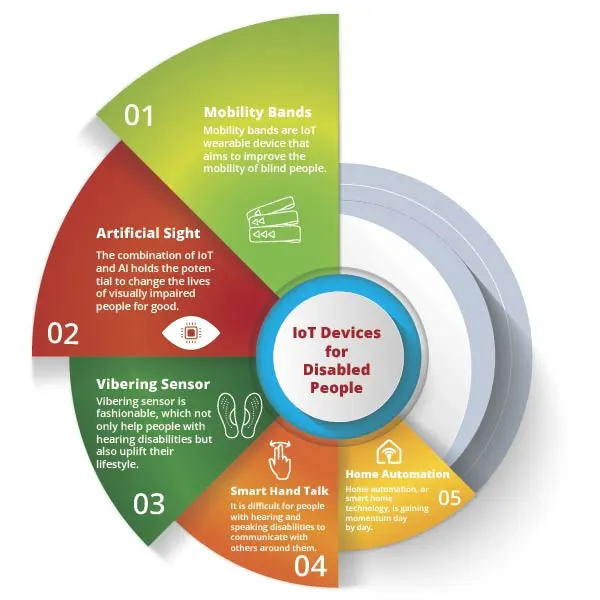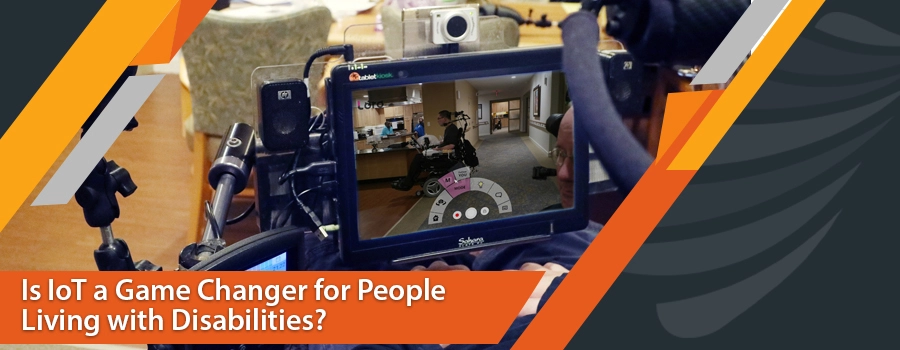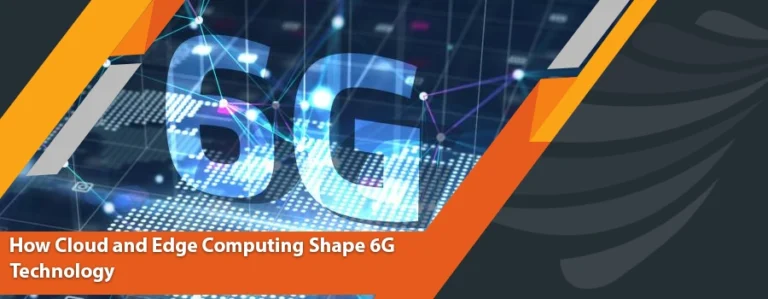Technological breakthroughs such as the Internet of Things, Artificial Intelligence, and Machine learning have entirely transformed the world. Technology has made our lives incredibly convenient. We can connect to a friend or family while sitting in a different part of the world or can control numerous smart devices with tablets or smartphones. Every group benefits from smart wearable IoT devices and other technologies in one way or another. IoT smart devices have proven to be a complete game changer for people with disabilities. IoT wearables have great potential to facilitate disabled people in the best possible manner. It can provide greater accessibility to people with physical disabilities and enable visually impaired people to see the world. It can help people with hearing and speaking problems to communicate with the normal people around without any hassle. IoT for a disabled audience is about breaking barriers and changing lives for good. The following article highlights the wearable IoT devices that disabled people can easily use to overcome the lacking they have faced in their lives until now. But first, we will discuss Assistive Technology as it umbrellas the concepts linked to the IoT smart devices for disabled people.

Assistive Technology (AT) for Accessibility
Assistive technology is a piece of hardware or software that aims to improve or maintain the functional capabilities of a disabled person. Example of Assistive Technology includes voice recognition, hearing aids, screen readers, smart wheelchair or keyboard, etc. Other wearable IoT devices with extraordinary functionalities are categorized as high-tech ATs. When compared to AT, IoT technology or wearables have the same potential to help disabled people, and the development of both AT and IoT has a promising future.
IoT Devices for Disabled People
1. Mobility Bands
Mobility bands are IoT wearable device that aims to improve the mobility of blind people. The band is lightweight, equipped with smart sensors, and can easily be worn around the shoulders. The camera incorporated in the device is responsible for analyzing the surroundings of blind people and recognizing the obstacles in the path. The band provides feedback by sound or vibration to tell the blind person what is in front or help him to navigate. Currently, many companies are designing and launching this IoT wearable for indoor use only, but this device will later be available for outdoor use. The companies already working on this device have planned to introduce face recognition, object identification, and mapping features to improve the experience of blind people and provide them with greater accessibility.
2. Artificial Sight
The combination of IoT and AI holds the potential to change the lives of visually impaired people for good. With the help of the camera’s lens on the phone and smart IoT software, visually challenged people can observe their surroundings and act accordingly. This kind of technology, paired with IoT, works as an artificial sight for blind people, helping them with easy and learned mobility. Another advanced application of similar technology is the Bionic Eye, which provides vision to visually challenged people. The device is surgically paired in the eye of a person who could see previously and become blind with age. The device then creates an artificial vision for the blind by converting the light into electric messages sent to the brain via the optic nerve. Providing artificial sight is challenging but not impossible, and IoT advancements in this regard can change the lives of nearly 2.2 billion people who have blindness.
3. Vibering Sensor
Vibering sensor is fashionable, which not only help people with hearing disabilities but also uplift their lifestyle. The vibering sensor or the Vibe ring is introduced to deaf people in the form of pair of rings and a wristwatch. The rings need to be worn on both hands and are designed to observe the surroundings and act as ears to identify the sound coming from behind the deaf person. On the other hand, the wristwatch identifies the sound captured by the rings and then represents it in an easy-to-read display for the deaf. The device is specially designed to identify specific key phrases, like ‘Hello’, a person’s name, and the honking noise of a car to alert a deaf person and help him or her to move around normally and quickly. The device also calculates the sound source’s position, intensity, and distance and vibrates accordingly to alert a deaf person.
4. Smart Hand Talk
It is difficult for people with hearing and speaking disabilities to communicate with others around them. However, with the help of IoT sensors, this challenging situation has been eased. Smart hand talk is an IoT-enabled wearable device with five flex sensors fixed on each finger, and the device is worn like a glove on a hand. The sensors sense and monitor the static movement of the hand and the fingers. Smart hand talk offers two ways to communicate with people, either by using the keypad in the device or by hand gesture. The hand gesture is translated, and the word is stored in a voice-recorded chip and can be heard by a speaker. The microcontroller linked to this device immediately processed the input provided either from hand gestures or keypad. Whereas the input from the keypad is displayed on the screen as an output. The device is helpful in communication when attached to the people involved in a conversation who may be deaf, dumb, or normal.
5. Home Automation
Home automation, or smart home technology, is gaining momentum day by day. This technology allows users to control or monitor the different parts of the home, which are difficult for disabled people to reach, see, or hear. Smart home automation technology helps control the temperature, security system, and lights by hand gesture or voice. Since the devices are not dependent on sight or touch input, it is easier for people with disabilities to control them. Home automation has given greater autonomy to disable people. For instance, simple home appliances like ovens, refrigerators, and smart lights can help disabled people to have more control and power over their houses while using IoT devices.
6. Connected Insoles
IoT wearables are not limited to glasses, bracelets, and watches and are much more integrated with regular clothing. The connected insoles help navigate without looking at the screen repeatedly. For instance, there is no need to look at your phone screen, which shows directions from Google Maps, as it can be risky and annoying. The other more interactive way for navigation is to sense the vibration in the shoes. While walking, the shoes can produce vibration on the side where you have to take a turn. For instance, the insole will vibrate on the left for a left turn and right side vibration for a right turn. For people with hearing or visual impairments, the connected insole is a great invention as it offers independence and mobility with the help of feedback that too without wearing any kind of weird system.
In a Nutshell…
IoT technology has proven to be a game changer for disabled people and has helped them achieve what they want while breaking different societal barriers. IoT has made the life of disabled people normal and more accessible while giving them more autonomy and control over their bodies, home, and life. They now do not rely on any other assistance to do their task or navigate indoors and outdoors as they can do all the tasks by sensing vibrations in shoes, wrist bands, or rings worn by them and communicate with others, and control their home with hand gestures only.




